
 An artistic practice where technology is used as the primary means
of expression, media art is inclined to try to always use the most
spectacular cutting edge technology.
An artistic practice where technology is used as the primary means
of expression, media art is inclined to try to always use the most
spectacular cutting edge technology.
In this exhibition, we will swim against the current, presenting works
that use the simplest (digital or analogue) technology in reduced
forms, different from their everyday function. The works exhibited
present a great variety of genres and themes. What is common in
them is the craftsmanship used in their making, a kind of playfulness
and irony, and in some of them, an intentional roughness. In its most
extreme form, media art can be created using no more than a light
bulb or an old alarm clock.
The Exhibition
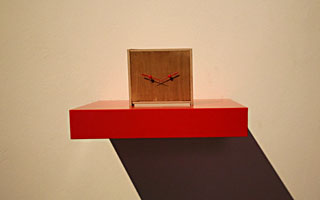
Attila Csörgő: Clockwork / object, 1993/2009
(Alarm clocks, wood panel)
Two alarm clocks reduced to their second hands,
mounted on wood panel, moved by the same clockwork.
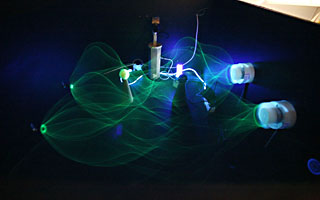
Gyula Július: Oscillation / installation, 2009
(box, engines, plastic string, monitor, UV-light)
Realtime image of a mechanically created wave, very
similar to a sequence of signs recorded digitally.
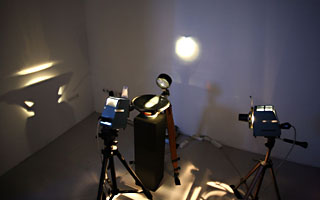
Szabolcs KissPál: Circular wave / installation, 2003
(speaker, water, 2 focusable lamps, lense)
A circular wave made by a sound is transformed into an
image.
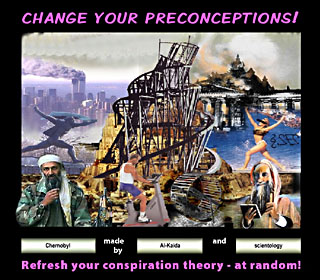
Rudolf Pacsika: Conspiration Theory Generator / installation, 2004
(computer, wood, plastic, print)
A pc terminal, a large part of whose monitor is replaced
by a print, and is operated with a wooden button: the
conspiracy theories generated randomly by computer
may inspire the viewer to think up complex mental
constructions.
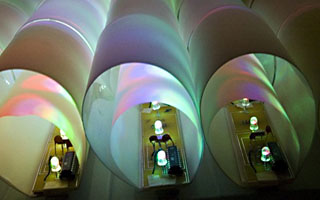
Melinda Sipos / Péter Németh: Arbour light 0.2 / installation, 2008
(paper, LCDs, computer - a Kitchen Budapest project)
The artist made a 7x9-pixel matrix from large leds. It
displays images from a video in a reduced form: having
lost its sharpness, the image of a natural scene (sunset,
glimmering water) is transformed into a mood.

János Sugár: Omega pont (demo) / object, 2000
(bulb, switch, paint)
ROSSZ (evil) is written on a light bulb, which can be
switched on using the switch with JÓ (good) written on
it. This may lead the spectator to think of the dichotomy
of Good and Evil.
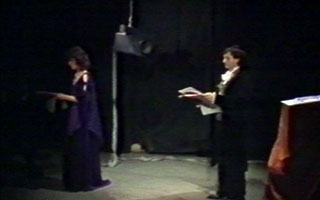
János Sugár: The Immortal Culprits
(An Opera on Video Technology), 1988
Written and directed by János Sugár
Music: Gábor Litván
Video documentation: U-matic, 30 minutes, BBS, 1988
How a video works is explained in an opera, presented
as a paraphrase of the tale of Hansel and Gretel.
Curators of Low-Tech:
Eike, Zsolt Kozma, Andrea Berg

 An artistic practice where technology is used as the primary means
of expression, media art is inclined to try to always use the most
spectacular cutting edge technology.
An artistic practice where technology is used as the primary means
of expression, media art is inclined to try to always use the most
spectacular cutting edge technology.





